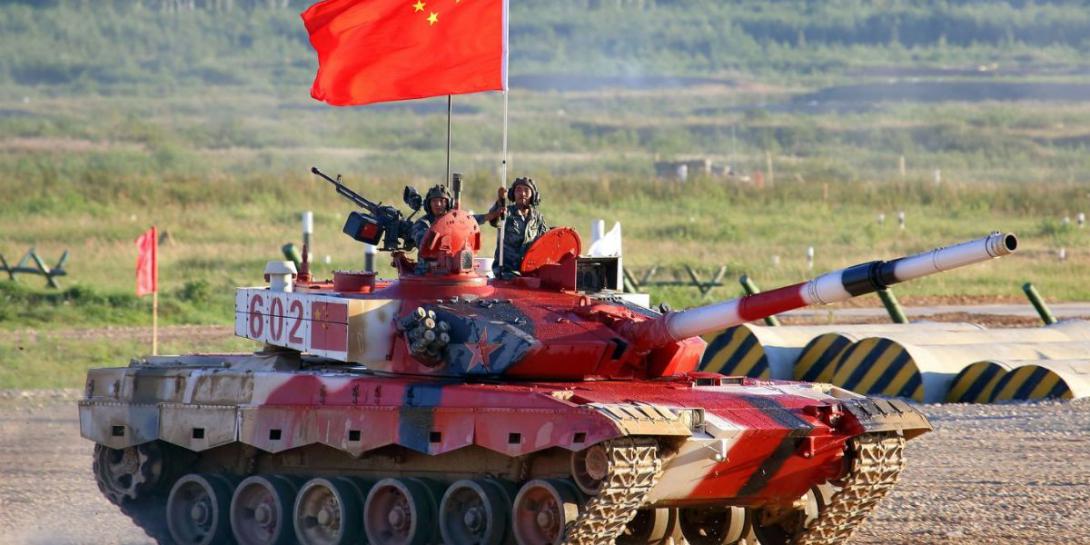DIA Updates Systems, Strategy and Organization Structure
The Defense Intelligence Agency is overhauling two critical but aging intelligence systems along with its strategy and organizational structure to enhance the organization’s ability to provide essential intelligence on militaries around the world.
Lt. Gen. Scott Berrier, USA, the director for the agency commonly known as DIA, lists modernization of the Joint Worldwide Intelligence Communications System (JWICS) as a top priority, along with the continued development of the Machine-assisted Analytic Rapid-repository System (MARS). The JWICS is a top-secret intranet administered by DIA for the intelligence community. MARS is a cloud computing-based system that uses artificial intelligence and machine learning to automatically sift through reams of data, performing mundane analysis and freeing up intelligence analysts to perform more complex analysis.
The DIA director notes that the agency has a five-year plan to modernize JWICS, which he describes as a top-secret super information highway. “It’s a key piece of everything that we do here. It’s key for the intelligence community and our nation. What we want to do is make sure it’s the most secure it can be, that we modernize it with tech refresh and that as the Defense Department moves to its cloud instantiation, however that looks, that we’re at pace with that.”
The JWICS was created about 30 years ago. Now-retired Lt. Gen. James Clapper, USAF, a former DIA director, approved development of the system in 1990. Initially, it was available only to a few select users but was installed at the White House under then-President Bill Clinton. Over time, the number of sites grew to approximately 50, according to a DIA article, and usage has ballooned in recent years.
At this point, Gen. Berrier suggests, JWICS essentially acts as a command and control network as much as an information dissemination system. “Every combatant commander has it on their desk, and they use it for much more than dissemination of information, so we’ve got to make sure that our end users have the right kit at the right time that’s up to date and current,” he explains. “Some of the JWICS kit that we have is a little older than it should be, and I’m not comfortable with that, so the investment’s going into new hardware, going into resiliency with encryption for the security, and also to make sure that when the cloud instantiation comes, that we’re set in the right posture to be able to do that.”
Given more funding, he also would like to modernize the system more quickly. “The president’s budget is the president’s budget. We support that for sure. But if I had more money, we could go faster, and we’re working that right now with our undersecretary of defense for intelligence [Ronald Moultrie],” he reports.
Asked how much additional funding he would like to accelerate the top-secret system’s modernization, the general declines to publicly disclose a dollar figure.
If push came to shove, Gen. Berrier indicates, he would likely prioritize JWICS over MARS. “We see these things moving out on parallel priorities. If I had to pick one right now, because JWICS is so critical to what our country needs for dissemination of sensitive information, I would say JWICS would be number one, but MARS is certainly a very close number two.”
In 2025, MARS should fully replace the current Modernized Integrated Database, which is known as MIDB. MARS includes a data environment, an Infrastructure module and an Order of Battle module. The agency announced earlier this year the availability of an early-version Order of Battle module, which depicts foreign military unit hierarchy in the context of the units’ geographic location, along with the equipment assigned to them.
DIA officials plan additional capabilities and are working with “key partners” to define those capabilities. “We have a plan over the next five years to really fill out our intelligence mission data, our cyber module and our space module, and that will complete it,” Gen. Berrier says.
The MIDB, which MARS is replacing, is another aging system. “MIDB—again a 30-year-old system—and think of the old days where analysts were looking at intelligence that was collected and stubby pencils and cards and Excel spreadsheets for updates for records,” Gen. Berrier offers. “That got better over time, but with MARS it happens automatically.”
MARS also allows the agency to “use all of the national technical collection that we can to understand everything about foundational military intelligence for any military installation around the world,” he adds. “So, we can also now use effective tools and data and open source [intelligence] that really enrich each record.”
MARS is needed in part because of the explosion of available intelligence data. “What MARS is going to do is to completely enrich what MIDB had and even as we’re experimenting with MARS right now, the number of records for each facility location is going up exponentially as we look at that data. It’s going to give us a lot more insights than it has in the past,” the general says.
Both the modernized JWICS and MARS will help the agency to better support the Defense Department and the intelligence community as the United States focuses on strategic competition with peer or near-peer adversaries such as China, Russia, North Korea and extremist groups.
Shortly after taking over the DIA in October, Gen. Berrier approved a new threat-based strategy, which he describes as a natural evolution from his predecessor’s threat-informed, capabilities-based strategy.
He also initiated a reorganization that includes the creation of a Directorate for Global Integration, which reached an initial operating capability on July 1. It is run by a deputy director for global integration, who now supervises the agency’s intelligence centers around the world. Those centers are connected to the combatant commands.
The deputy director for global integration also will have some budget authority over other parts of the agency, including the directorates for analysis, operations and science and technology. “It’s a new way of thinking about the problem and leveraging all of those capabilities that we have globally to be able to look at what the Chinese, Russians and others are doing to us and how we can offer opportunities to counter that,” Gen. Berrier asserts.
The general public, however, will likely never know the benefits provided. “Once we build out our Directorate for Global Integration, I think you’re going to see some quick wins. We probably won’t be able to discuss those quick wins in an unclassified setting, but it’s the ability to take sensitive intelligence, to illuminate that information and then present it as opportunities to our key partners, whether that be combatant commands, whether that’s the Defense Department or foreign partners.”
China is the most concerning competitor to the United States. “We talk about the rise of China. I think China has risen. The investments that they have made and the expansion of their military capability has been pretty astounding when you think about what they’re spending their precious defense dollars on, and the capabilities they have been able to pursue and produce is interesting.”
But Russia is not to be ignored, he warns. “Right now, China is the pacing threat, but I always tell people, ‘Don’t count Russia out.’ When you think about the nuclear triad that Russia has, they are an existential threat to the United States of America. They have proven through cyber attacks and the fact that they used chemical-biological weapons on their own citizens inside their own country and outside, it makes them a threat that we have to watch and watch very carefully.”
He suggests the changes will help to operationalize the intelligence provided by DIA analysts. So, rather than simply collecting, analyzing and reporting intelligence data, the agency also may provide options for addressing the information inside its reports. “This is all about dealing with sensitive intelligence in a timely manner to be able to provide new opportunities to the department that perhaps they were not thinking about with the grind of current intel and everything else going on,” he says. “So, everything I’ve said about JWICS and MARS really now supports strategic competition against China, Russia, North Korea, Iran and violent extremist organizations.”





Comments